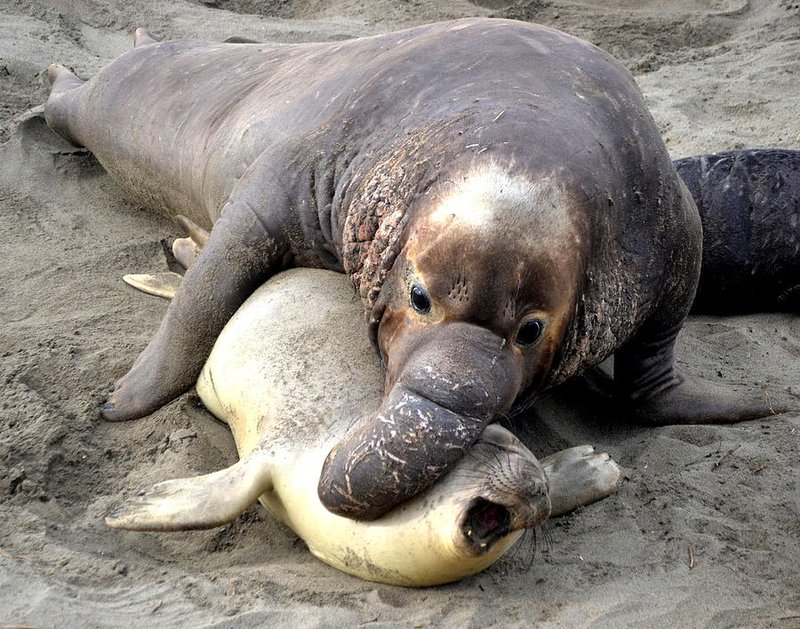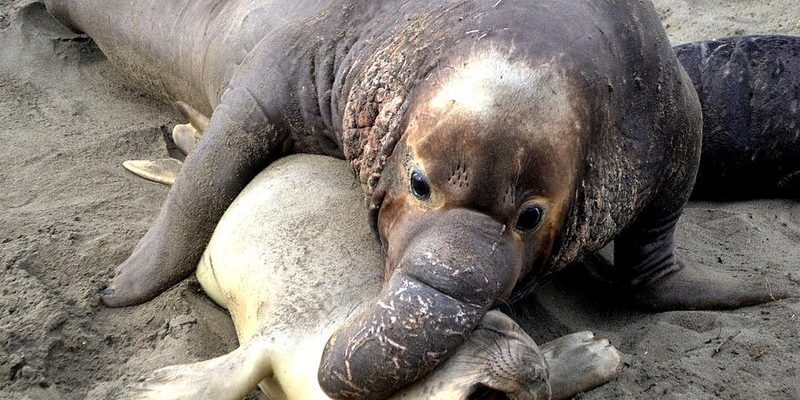
Elephant seals are divided mainly into two species—Northern and Southern—each with its quirks. Much like a dramatic family reunion, their breeding season is filled with intense competition, emotional displays, and remarkable strategies for survival. If you’re curious about how these amazing creatures ensure the continuation of their species, you’re in for a treat. Let’s dive into their world and unpack the mystery behind their breeding and reproduction.
Understanding the Elephant Seal Life Cycle
Elephant seals have quite a fascinating life cycle, beginning with their birth. A female typically gives birth to a single pup after a long gestation period of about 11 months. Picture this: a tiny, floppy, grayish pup weighing around 60 pounds, emerging into the world. It’s a bit like watching a baby deer trying to stand for the first time!
In the first few weeks, the mother nurses her pup, providing rich milk that helps it gain weight quickly. By the time the pup is a month old, it can weigh up to 300 pounds! This rapid growth is crucial as the pup prepares to fend for itself when weaning occurs. Typically, this happens around four weeks after birth. During this time, the mother also has to regain her strength after the exhausting nursing period. You might be wondering how she manages this while still caring for her pup—and that’s where the timing of breeding comes into play.
The Breeding Season: A Wild Showdown
The breeding season for elephant seals is like an annual festival, with males engaging in fierce battles for dominance and mating rights. This season typically spans from late December to March. During this time, males return to breeding grounds, often exhibiting striking physical changes. They can lose up to a third of their body weight during this period due to the intense competition and lack of food.
Here’s the thing: only the strongest, most dominant males, known as “alpha males,” get to mate with the females. They establish their territory on the beach and roar to assert their dominance. You might picture it like a high school popularity contest, but with a lot more blubber and grunting! The males engage in intense physical fights, using their size and strength to intimidate rivals. It’s quite the spectacle to witness, and it’s all part of the natural order to ensure the strongest genes carry on.
Female Elephant Seals: Selection and Mating
Now, let’s turn our attention to the females. They typically return to the colony a bit later than the males, giving birth before finding a mate. Once the pups are weaned, females enter the breeding cycle again. They’re picky about mates, often choosing to mate with the strongest males. It’s as if they have a natural radar for quality!
The actual mating occurs shortly after a female gives birth. After a brief reunion with a female, the male will mate with her, ensuring his genes are passed on. Interestingly, females can store sperm for several weeks after mating, which allows them flexibility in timing their next pregnancy. This ability can be a lifesaver, helping ensure that births coincide with favorable environmental conditions.
Pups: The Next Generation
Once the mating season wraps up, the focus shifts entirely to the pups. After a gestation period of about 11 months, the female will again give birth to a single pup, and the cycle starts all over. The young pups are born with a thick layer of blubber, protecting them from the cold waters of the ocean.
In the wild, survival is a challenge. A high percentage of pups do not make it past their first year, mainly due to predation and the harsh environment. However, those that do survive often exhibit remarkable resilience. As they grow, they learn how to swim and hunt, developing the skills they need for life in the ocean. It’s an incredible journey from a helpless pup to a powerful adult.
Challenges in Breeding and Reproduction
Even in a seemingly idyllic setting, elephant seals face numerous challenges during breeding and reproduction. Habitat loss, climate change, and human interference pose significant threats to their survival. For instance, rising sea levels can impact breeding grounds, and human activity can disrupt their natural behaviors.
Additionally, males often experience stress from competition and conflicts, which can lead to injuries. Here’s why this matters: the fewer dominant males there are, the less genetic diversity may occur within the population. A healthy population thrives on variety, ensuring resilience against diseases and environmental changes.
Conservation efforts are underway to protect these magnificent creatures and their breeding grounds. Organizations work to monitor populations and create safe havens for elephant seals to thrive. It’s a reminder that every species plays a crucial role in our ecosystem, and protecting them benefits us all.
The Importance of Genetic Diversity
Genetic diversity is critical for the survival of elephant seals. It ensures adaptability and resilience in changing environments. When a population is too small or inbred, it can lead to health issues, reduced fertility, and an increased likelihood of extinction.
To combat this, conservationists monitor the mating patterns and genetic health of elephant seal populations. By encouraging genetic diversity, they help strengthen future generations, providing a brighter outlook for these remarkable animals.
Here’s the takeaway: protecting habitats and maintaining healthy populations is essential not just for elephant seals but for the ocean ecosystems they represent. By focusing on conservation efforts, we contribute to a balanced environment where all species can thrive.
Final Thoughts on Elephant Seal Reproduction
The breeding and reproduction of the elephant seal is a captivating part of their life story. From the drama of the breeding season to the nurturing of young pups, these remarkable creatures remind us of the complexities of life in the wild. Honestly, the whole process is as fascinating as it is vital for their survival.
As we learn more about elephant seals, we become better equipped to help protect them. Whether through outreach, education, or personal action, every small effort counts. So, next time you think of seals, remember the incredible journey these animals undertake to ensure their next generation continues. It’s a truly inspiring story of survival and resilience!

